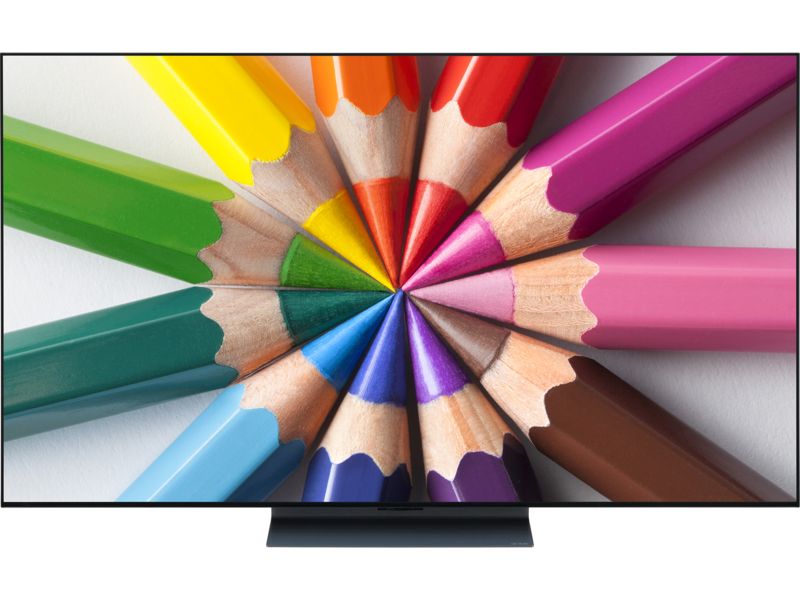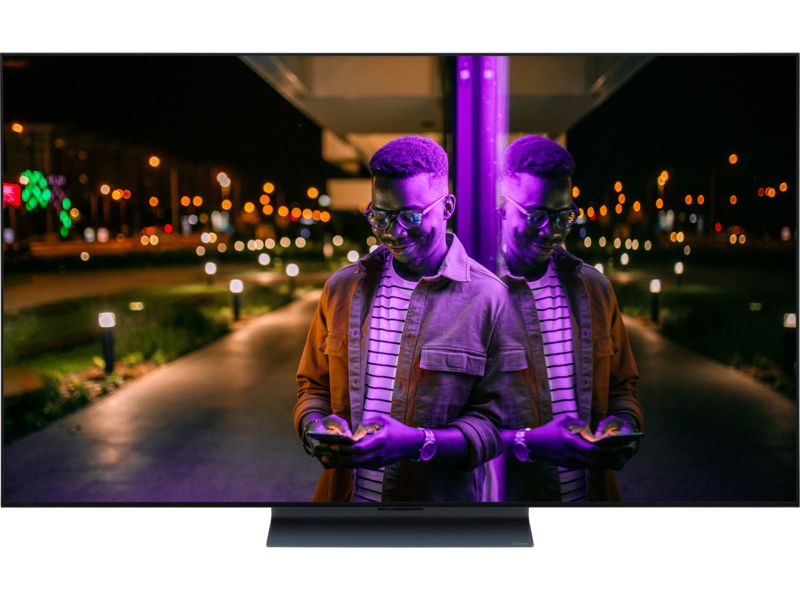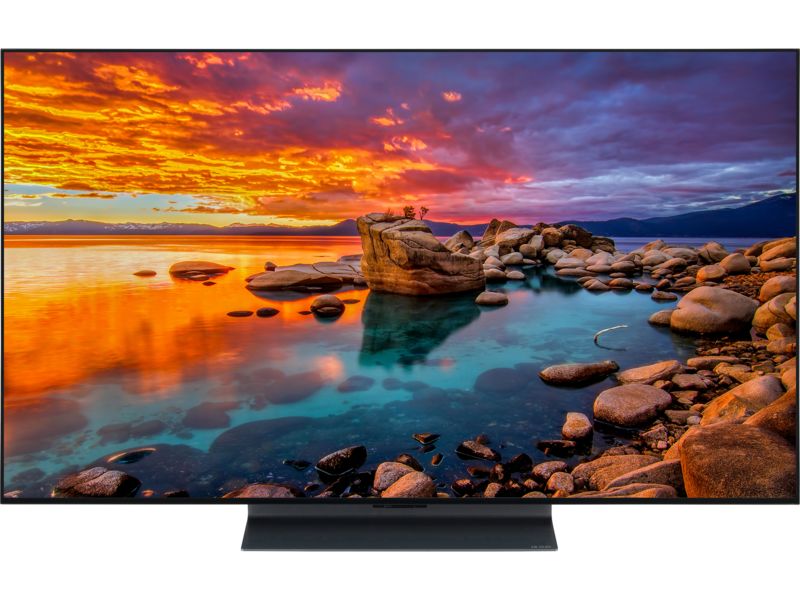What you need to know about 8K TV

8K TVs are made by some of the biggest names in TVs, including LG, Samsung and Sony. Of course, just because the tech world is eager to introduce something new, it doesn't necessarily mean you need to scrap your 4K TV.
Although 4K technology has been around for a while, and the first 4K TVs were released back in 2012, many UK broadcasters still don't have 4K channels.
The introduction of 4K content has been glacial in terms of speed - but can the same be said of 8K shows and movies? Or will Hollywood, streaming services and UK broadcasters be quicker to react this time?
Read on to find out more about 8K TV and when it's worth buying one.
Just want help buying a great TV? Our independent lab tests sort the great models from the worst - see our expert TV reviews.
Everything you need to know about 8K TV
Unlike some other TV technologies (HDR TV, we're looking at you), 8K is easy to understand.
An 8K TV has four times the number of pixels of a 4K TV. Which, in turn, has four times the number of pixels of an HD TV.
The resolution on an 8K TV is 7,680 x 4,320 for a total of 33,177,600 pixels.
This enormous number of pixels means an 8K TV can display incredibly sharp, crisp images that show more detail than a 4K TV can manage.
We're in the early stages of 8K TVs. Only LG, Samsung, Sharp and Sony have announced 8K sets you'll be able to buy, and it will come as no surprise that they are extremely expensive.
Samsung's cheapest range starts at around £2,000 for the 55-inch set while models from rival brands are all bigger and cost more as a result.
What can you watch in 8K?
Here's the elephant in the room - there's no 8K content. No 8K Blu-rays, no 8K streaming services and no 8K channels. There have been a handful of one-off 8K streams, and some proof of concept style videos on YouTube - slow pans around beautiful countryside type stuff - but not regular programming of films.
The only way to watch regular 8K content would require you to move to Japan, where national broadcaster NHK is trialling an 8K channel, or buy an extremely expensive 8K camera, hire some actors and make your own show.
This isn't unexpected. The companies making the content are always playing catch-up with the TV technology. It was the same when 4K TVs were first released.
Streaming services are usually quickest out of the blocks; it only took Netflix three years from when 4K TVs were widely available to start offering some of its programming in ultra-HD. Now most streaming services have plenty of 4K films and shows to watch.
To stream 4K content, you need a good internet connection. Netflix recommends at least 25Mbps to get a reliable stream. 8K streams could feasibly require double that.
Whatever TV you buy, make sure it's worth your money - see all of our Best Buy TVs.
Can you tell the difference between 4K and 8K?
We all know someone who swears they can't tell the difference between HD and 4K content, so is it the same deal when moving from 4K to 8K.
The main issue here is that there is so little 8K content to watch, but when you are watching something you can see an improvement. It's not an earth-shattering upgrade that will stop people in their tracks, but native 8K footage is sharper.
You need a TV of a certain size to really the difference and it's the same with 4K TVs, too. You don't get 4K 32-inch TVs because it's hard to pick out the extra detail and for now you can't get an 8K TV smaller than 55 inches.
This might change, but we'd be surprised if 8K comes in TVs much smaller than 50 inches.
8K TVs to watch
Samsung QN900B, QN800B and QN700B

Samsung has one of the biggest lineups of 8K TVs. It launched nine of them in 2022 and we're expect around the same in 2023, although some come carry over. Sizes start from 55 inches on the QN700B and go up to 85 inches on the QN800B and QN900B ranges.
- QN900B: it's as high-end as TVs get. The 8K display is almost bezel-less and it's powered by Samsung's ludicrously named Neural Quantum Processor 8K. It supports HDR10+ and the 12 speakers packed in and around the screen are designed to create a more surround sound feel. Few TVs actually pull this off though. The impressive sound specs and 120Hz screen set this range apart from the QN800B and QN700B ranges. Prices start at £3,999 for the 65-inch model.
- QN800B: the QN800B has the same processor as the QN900B and a Neo QLED display (read more about those in our guide to QLED TVs). Even the speaker set up is the same and the only clear difference is Samsung's own HDR rating. It rates the pricier QN900B and Quantum HDR 4000 and the QN800B at HDR2000. It supports the same formats, but the number suggests the blacks won't look quite as deep and the colours won't be as rich on the QN800Bs. Prices start at £2,499 for the 65-inch model.
- QN700B: this is the entry-level 8K range from Samsung, although the specs are anything but. It has a Neo QLED display, but uses the Neo Quantum Processor 8K LITE. This means the QN700B might be worse than the QN800B and QN900B at upscaling 8K content. Where the other 8K ranges have Object Tracking Sound Pro (a technology designed to make sound come from different parts of the screen) the QN700B has the LITE version, so may not sound as good. The screen isn't 120Hz either. The 55-inch model is £1,999
LG Signature Z2 8K OLED TV and QNED 8K ranges

LG's Signature OLEDs are staggeringly expensive. The 77-inch model is £11,999 and the 88-inch one costs a staggering £24,999. These TVs are almost a year old and the price hasn't budged.
The OLED display is most of what you're paying for. 4K OLEDs with screen this size cost a fortune, too, and adding the 8K capabilities keeps the Z2 out of reach of most people. That's where it belongs for now, since no one needs an 8K set yet.
It has all the high-end features you'd expect, including Dolby Vision IQ HDR which adjusts contrast to suit each scene based on the light in your room and a 120Hz display for smoother gaming on the latest consoles.
The QNED99 and QNED96 range costs less than a mortgage, which is a good start. They are still exceptionally expensive however, with the 65-inch models in each range costing around £3,000.
Both ranges are feature-packed, with a 120Hz display, Dolby Vision IQ. They can do most of the what the Z2 OLED can do, but since QNED screens are backlit they cost far less. QNED has a Mini LED backlight, which is relatively new tech. The bulbs in the backlight are tiny, so LG can fit more of them in. The result should be greater control of brightness and contrast.
Sony Z9K 8K Mini LED TV

There's nothing smaller than 75 inches in Sony's 8K range. Both it and the 85-inch model use the XR processor, which debuted in Sony's high-end 4K and 8K ranges in 2021. It prides itself on understanding how humans watch TV and it prioritises the parts of the screen out eyes are drawn to accordingly.
Otherwise the Z9K is singing the same song as the other 8K TVs you can buy. The Mini LED display is similar to the QNED one in LG's 8K sets and it's stuffed with the latest features.
It also includes Acoustic Multi-Audio, which uses speakers in the frame of the TV so produce sound with more accuracy. It should seem like the audio comes direct from an actor mouth, or an explosion in the distance. It's an interesting idea that should work best on bigger screens.
The 75-inch model costs and epic £7,499.
A note on 120Hz
Most of these 8K TVs have screen capable of displaying 120 frames per second to make compatible content (usually games) look as smooth as possible.
The catch is that they can only manage 120Hz when you're watch 4K content. If you watch 8K resolution the resolution will reach 60Hz. This isn't an issue if you're watching a film or TV, which is usually 24 frames per second, but you can't play an 8K game at 120Hz just yet.
Should you buy an 8K TV?
No, buy a 4K one instead and use our TV reviews to pick the best for your budget. Given that 4K content isn't that widely available, it will be several years before you'll be able to easily watch something in 8K.
But also, maybe. The ability of these TVs to upscale any content to somewhere near 8K quality is intriguing. If this makes a significant difference to how good standard definition, HD and 4K video look, then it may be worth considering, assuming you can afford one.



